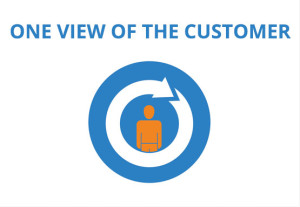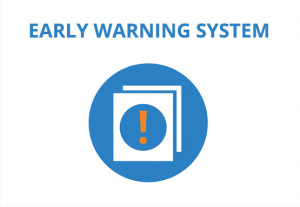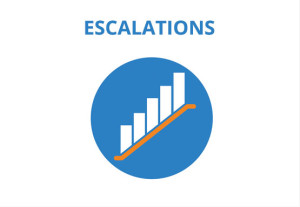The Subscription Economy has disrupted the way organizations manage their relationships with their customers. In order to minimize churn and maximize growth, a framework is needed to operationalize your company’s efforts in managing your customers throughout their entire lifecycle. The 11 Pillars of Customer Success provides leaders with best practice guidance in developing a world class Customer Success organization.
This post focuses on the foundational programs that are required to stay ahead of issues and maximize the lifetime value of your customers. Developing One View of the Customer, an Early Warning System, as well as a programmatic way to resolve Escalations will provide you with a critical vantage point that will move your organization out of reactive mode and into a proactive state of engaging with your customers.
 One View of the Customer
One View of the Customer
In order for a Customer Success organization to effectively manage customers, they need a line of sight on all the data points that could indicate issues as well as opportunities for expansion. Whether it’s usage data, support tickets, billing information, or Customer Satisfaction responses, customer-facing teams need an easy way to gain context on the account, their current health, and key trends before they jump on a call.
Because this information typically sits in different data silos, organizations haven’t spent the time needed to provide customer facing teams with this integrated view. But they need to. From a customer experience perspective, every resource needs context in order to provide a customer with the best service possible. Support teams need to know that an end user who has filed a ticket is a key influencer at one of their strategic accounts who is currently a detractor based on their last NPS response. Armed with a 360-degree view, the Support Rep can take a proactive approach to helping this user and potentially turn around their impression of your company.
Establishing One View of the Customer can also help customer-facing teams proactively engage instead of just reacting to issues. Having hard-to-reach data points, such as usage, in one location provides teams with the data that indicates when outreach is needed. Rather than spending time accessing data, CSMs can query their customers and analyze adoption progress and determine if action is needed … well before this becomes an issue.

Once One View of the Customer is established, the next program that must be developed is your Early Warning System. While customer-facing teams can certainly drive proactive customer engagement with this integrated view of customer data, it simply isn’t possible for one individual to stay on top of all data points with all users at all times. In order to scale the efforts of the individual, a system is needed to warn you of problems that could lead to churn … as well as opportunities that could result in growth.
An Early Warning is comprised of two key components. The first is the Customer Health Score: a prediction or description of a customer’s likelihood to renew and/or grow. The second is Health Alerts, which give you early indication of an issue or an opportunity well before it appears in the Customer Health Score.
Customer Health Score
There is a lot of discussion around establishing a Customer Health Score and the expectation of this Red, Yellow, and Green indicator. For some leaders, they would like to see this metric predict who may churn or who will grow. Others may not trust the math and would rather see this score be a current indication of who is at risk or who is happy and will renew. Depending on the data, a Customer Health Score will either be Predictive or Descriptive.
- Predictive Health Score: A Predictive Health Score is centered on usage data and the Big Data algorithms that consider who will stay and who will churn. By evaluating the actions of end users and the pattern of outcomes (who renewed, churned, or even expanded), a score is generated that reflects a future outcome. However, in order for a score to be truly predictive, you need a lot of data and a lot of outcomes. That means a lot of end users performing a lot of actions on a daily basis that result in a lot of different events (churn, down-sell, renew, grow, etc.) for a long period of time. Most SaaS companies simply do not have enough data to support this type of a health score.
- Descriptive Health Score: Rather than predict some future state, a Descriptive Health Score represents customer health right now. The Red, Yellow or Green indicators provide you with a current view of who is at risk of churn or who is happy and could be a great candidate for up-sell. The value in a Descriptive Health Score is bringing all the data points together in computing this score so that you have a true (current) measure of health and can take action accordingly.
Health Alerts
Whether your Customer Health Score is predictive or descriptive, there may be issues that pop up before they ever make their way into a health score. For example, you may want to be alerted to a Sev 1 Support Ticket that is open beyond the SLA date as you know this could place the customer at risk of churn if the problem isn’t resolved. The account may currently be green, but eventually will turn yellow or red if SLA dates are missed.
Health Alerts are a critical component of your Early Warning System as they provide you early signals (such as taking action on a support issue or even jumping on an up-sell opportunity) in advance of this data eventually impacting the health score.

Once One View is established and your Early Warning System is in place, the next foundational program to develop is your Escalation program.
More than simply flagging an account at risk, a formal Escalation program considers the actions that are required to successfully resolve an issue that could result in customer churn, as well as the ability to track all efforts across all departments. Additionally, a best-in-class Escalation program will consider all the conditions where an account should be auto-escalated (such as champion leaving or usage dropping by a certain percentage). It should also contemplate time to resolve and alert leadership if there are issues that are falling outside an acceptable timeframe.
Operationalizing your Escalations program will help your organization take action on key issues faster and in a more coordinated effort. Additionally, your program must also provide transparency and departmental accountability, as at-risk issues are a leading indicator of potential churn. As such, you will want to track all escalations by reason and consider trends over time. Are we getting better or worse in the number/percentage of issues related to implementation? Reports and dashboards around Escalations are must haves for your e-staff meetings as these are the issues your organization must resolve in order to minimize customer churn.
Building Beyond the Foundation
Now that you’ve developed the foundation for managing your customers, it’s time to build out the rest of your customer programs. In future posts, I will explain how the remaining Pillars of Customer Success can help you stay ahead of red flags, maximize revenue, and even engage your customers for life.
While the emphasis or program maturing may vary across organizations, all 11 must be considered for a company to successfully retain and grow their customers in the Subscription Economy.
This post was originally published on the Bluenose Customer Success Blog. It is reprinted here with permission.